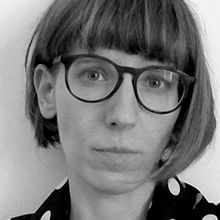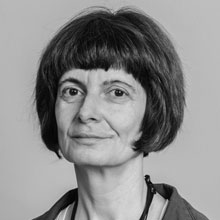Media representation of disability
Introduction
An analytical study of the representation of people with disabilities in advertisements, campaigns and films can focus on sensitive issues that illustrate the social, political, cultural and psychological exclusion and oppression of people with disabilities. The following issues are worth exploring when examining the media representation of disability. How do films about disabled characters help or hinder changes in attitudes? What narratives and topoi can be identified? Do they portray victims, superheroes or ordinary people? What are the pitfalls of one and the other? Do the possibilities of new media reinforce or destroy prejudices in the content published by and about people with disabilities? What are the consequences of harmful representations in the media?
The issue is topical and relevant, as representations of people with disabilities both reflect and influence the social integration of the population concerned at a given time, not only revealing but also shaping stereotypes (Fraser, 2018).
Models of disability, concepts of disability studies
The perception of disability and people with disabilities in today's society stems from the medical model of disability, which suggests a simplistic understanding of disability as a personal tragedy of the individual. Disabled people are seen and made to see themselves as ones with 'special needs' (Johnstone, 2004).
(The medical model essentially consists of recognising a condition that is different from the norm, diagnosing it and providing treatment and assistance through a service. This is complemented by a rehabilitation approach, which aims to bring the patient as close to normal as possible in order to restore his/her original ‘normal’ condition.)
In contrast, the social model distinguishes disability as a social phenomenon from individual, personal tragedy; what’s more, it defines personal physical condition and disability as a social status as almost independent from each other (Johnstone, 2004). The strength and the challenge of this model is that it shifts the causal model of responsibility from the personal and individual to the collective approach. The social model derives disability from processes of social exclusion; it is the society itself that constructs organisational environments.
The third, human rights approach is based on the above mentioned social model, according to which disability is not considered as a 'deficiency' of the individual, describable by a medical diagnosis, and therefore a private matter.
It claims that certain individual characteristics always become barriers to the participation of individuals in society, depending on the qualities of the given society in which they live, and that these barriers together are considered to be the 'disability'. It means that the prevailing legal framework, available services, built environment, attitudes and other societal conditions all play roles alongside the individual's capabilities.
The human rights model is based on the following general considerations:
▪ Every human being has the right to self-determination;
▪ Some people are more fortunate and advantaged in terms of psychosocial and social circumstances to determine their own future;
▪ Those who have less opportunity for self-determination are in this disadvantaged position for social reasons over which they have no control;
▪ It follows from the above that it is a collective responsibility and duty to help
disadvantaged groups to determine their own future.
The human rights-based model of disability, based on the above axioms of equality of opportunity, asserts the following about disability:
▪ There is structural exclusion of people with disabilities in society;
▪ The model emphasizes the importance of collective action and advocacy;
▪ The model emphasizes the importance of self-determination ("nothing about us without us");
▪ It stresses the importance of legislation that addresses the rights of people with disabilities;
▪ It calls for sanctions in all situations of exclusion of people with disabilities.
Social inclusion combines perspectives of all the three models.
The World Health Organization defines disability as a complex interaction between a person's physical characteristics, the environment and the society they live in. The phenomenon is therefore not a direct product of physical impairment, but of the way society is structured and perceived. This is a social model in disability science, as opposed to the medical model, which is not concerned with 'fixing' the person with a disability, but rather with making the environment accessible focusing on the attitudes of the majority of society (who.int) (Pullin, 2009).
The idea that being different is normal is the foundation of the inclusive approach (Scott, McGuire & Shaw, 2003).
Laying the foundations for inclusive functioning begins with an understanding of abelism. Intactism "relates the notion of a valuable human being to fixed ideals, idealized qualities and characteristics, and judges the world in terms of these (Dunn, 2019).
Wholesomeness is an attitude that reflects stereotypes, prejudices, social oppression, which manifests itself in conscious or unconscious forms, it can be unmistakable, strident, hidden, subtle, caring and patronising. We speak of overt wholesomeness when non-disabled people verbally express their pity and sympathy. This discourse of wholesomeness is particularly characteristic of the media (Ghai, 2017).
An alternative to ableism is disablism, which refers to various forms of social oppression of disabled people because of their perceived or real impairments. There are conscious and unconscious discourses and social oppressive practices that discriminate against people with disabilities. The common denominator of ableism and disability is the objectification of the individual with disabilities.
Aspects for media analysis
The disabled person is the target of many projections, and it is worthwhile to bring these to the surface in our analytical investigation (pity,curiosity, admiration, anger, resentment, patronage, disregard, sympathy). The analysis of the empowerment motive at the structural level points to those areas of social life that maintain and foment social inequality and injustice, and at the same time encourage excluded groups to influence political decisions and welfare services that affect their lives (Brown and Bourne, 1995).
// Narratives
Both the positioning of disabled people and the stories they tell and convey contribute to the image of the minority presented in the media. In the case of communication campaigns and advertisements, it is worth examining the perspective from which people with disabilities are represented.
For example,
- Are differences or similarities emphasised?
- Is the representation directed outwards or inwards?
- What message is conveyed in one case or the other?
- How is the message framed?
We speak of a hybridising narrative when the representation emphasises similarities between people with disabilities and mainstream society rather than contrasts. The essentialising narrative is when differences are presented to convey information, to act as an attitude-shaping force for the members of the mainstream society.
// Schemes
Chasnoff's Code of the Freaks (2011) highlights three cinematic schemas that characterise the representation of disabled people. These suggest that the disabled person is portrayed as a violent, humorous or pathetic character. A further typical topos is the portrayal of the disabled person as an object of violence, a victim of physical abuse, sexual abuse, vandalism, theft (Barnes, 1992). These character portrayals tend to confuse the viewer, create anxiety and contribute to the formation of a false image of the disabled person. It is worth paying particular attention to the 'Super Criple', the above-average, superhero character portrayal which suggests that a person with a disability can do anything if they are really determined.
Writer and activist Stella Young has called the phenomenon of making the disabled person an inspiration to non-disabled people inspiration porn.
“When we objectify the disabled and turn them into inspirations to fuel our own lives, when we share statements like » The only disability in life is a bad attitude«, we fail to acknowledge the societal barriers that exclude people.”
- Stella Young
https://makingwavesfoundation.com.au/news/40262/stella-youngs-i-am-not-your-inspiration/?type_fr=
Another topos is that of the disabled person as an object of ridicule, with whom one can do anything without realising it, or as a burden for whom others sacrifice themselves.
Examples:
Film:
Daredevil (2003), Blind Fury (1989) - superhero
Dr. Strangelove (1964) - murderer
Forrest Gump (1994) - naive, kind, conscientious
See No Evil (1971) - infantile
The Hunchback of Notre Dame (1939) - demonized, dehumanized character
Ads and Campaigns:
We’re Superhumans
https://www.youtube.com/watch?v=IocLkk3aYlk
Adidas: Impossible is Nothing
Pro Infirmis: «Because who is perfect?»
https://www.youtube.com/watch?v=E8umFV69fNg
Pro Infirmis: Everyone is equal. No one is more equal.
https://www.youtube.com/watch?v=T1fcc04uR4E
Participative teaching method
The participative teaching method gives those affected the opportunity to participate in education and to learn together. People with disabilities complement our professional knowledge by bringing their own lived experiences.
At the same time, the principle of nothing about us without us applies as well.
The method requires a high level of preparation, for example, to meet the individual needs of the participative trainer, and ensuring accessibility of information and communication. The partnership between teachers and their peers is important and serves as a role model for students.
References:
Barnes, C. (1992). Disabling Imagery and the Media: An Exploration of the Principles for Media Representations of Disabled People. Halifax:BCODP/Ryburn Publishing.
[online] https://disability-studies.leeds.ac.uk/wp-content/uploads/sites/40/library/Barnes-disabling-imagery.pdf
Brown, A. & Bourne, I. (1996). The Social Work Supervisor. Supervision in Community, Day Care and Residential Settings - Supervision in Context. Buckingham, Philadeplhia: Open University Press.
Dunn, D. S. (2019). Recognizing, Understanding and Avoiding Ableism. Committee on Disability Issues in Psychology (CDIP).
[online] https://www.apa.org/pi/disability/committee/recognizing-and-avoiding-ableism.pdf
Ellis, K. & Kent, M. (2011). Disability and New Media. New York: Routledge.
Ghai, A. (2017) Discourses of Ableism and Disablism. Semantic Scholar.
[online] https://www.semanticscholar.org/paper/Unit-1-Discourses-Of-Ableism-And-Disablism-Ghai/54b3f5af16c0cc1f795b728ea219788da2d7a530
Fraser, B. (2018). Cognitive Disability Aesthetics: Visual Culture Disability Representations, and the (In)Visibility of Cognitive Difference. Toronto: University of Toronto Press.
Goodley, D. (2017). Disability Studies. An Interdisciplinary Introduction. 2nd edition. The United States – United Kingdom – New Delhi: Sage Publications.
Johnstone, C.J. (2004). Disability identity: Personal constructions and formalized supports. Disability Studies Quarterly, 24 (4).
Lennard, J. D. (2006). The Disability Studies Reader. Second Edition. New York: Routledge.
Pullin, G. (2009) Design Meets Disability. Cambridge: The MIT Press.
who.int. (2022). Disability.
[online] https://www.who.int/health-topics/disability#tab=tab_1
Suggestion for text / video / film:
Film:
Being There (1979) /Hal Ashby
Champions (2018) / Javier Fesser
Come as You Are (2011) /Geoffrey Enthoven
Crip Camp: A Disability Revolution (2020) / James Lebrecht & Nicole Newnham
I am Sam (2001) / Sam Wickey
Of Mice and Men (1992) / Gary Sinise
The Fisher King (1991) /Terry Gilliam
The Shape of Water (2017) /Guillermo del Toro
Video:
Carter, L. (2015). The Changing Depiction of Disabilities in the Media.
[online] https://www.youtube.com/watch?time_continue=207&v=O2aiqZw2B30&feature=emb_logo
Chasnoff, S. (2011). Code of the Freaks.
Linton, S. (2018). The Human Perspective: Simi Linton.
[online] https://www.youtube.com/watch?v=2lpz5a2zI68
Young, S. (2014). I'm not your inspiration, thank you very much.
[online] https://www.ted.com/talks/stella_young_i_m_not_your_inspiration_thank_you_very_much
Text:
Disability Studies 101
[online] https://disstudies101.com
Media & Disability Resources
Media & Disability Resources[online] https://mediadisability.wordpress.com
Media Representation of Disabled People
[online] http://www.disabilityplanet.co.uk/index.html
Smith S. L., Choueiti, M., Pieper, K., Yao K., Case A. & Choi A. (2019).
Inequality in 1,200 Popular Films: Examining Portrayals of Gender, Race/Ethnicity, LGBTQ & Disability from 2007 to 2018. USC Annenberg.
[online] https://assets.uscannenberg.org/docs/aii-inequality-report-2019-09-03.pdf

Beáta Sosity
Multimedia-art DLA Studies at Moholy-Nagy University of Art and Design Budapest
Beáta Sosity is a graphic designer and mother of a child with multiple disabilities. She was senior editor, project manager and art director at Typotex Electronic Publishing Ltd. between 2009 and 2017, she has been a volunteer graphic designer at Bethesda Children’s Hospital between 2017 and 2022. After graduating in 2021, she teaches graphic design at MOME. She holds a degree in history and Hungarian language and literature from ELTE. Currently a doctoral student of Multimedia-art DLA Studies at Moholy-Nagy University of Art and Design Budapest, her subject based on the 'Disability design' methodological research.

Judit Bényei
Moholy-Nagy University of Art and Design (MOME)
Judit Bényei, PhD is an associate professor at Moholy-Nagy University of Art and Design (MOME). She is the head of the Design- and Art Teacher Training Programme. Her main research fields are media education, cultural studies, and digital museum learning. She has been working as a researcher and developer in media awareness development for more than 20 years.